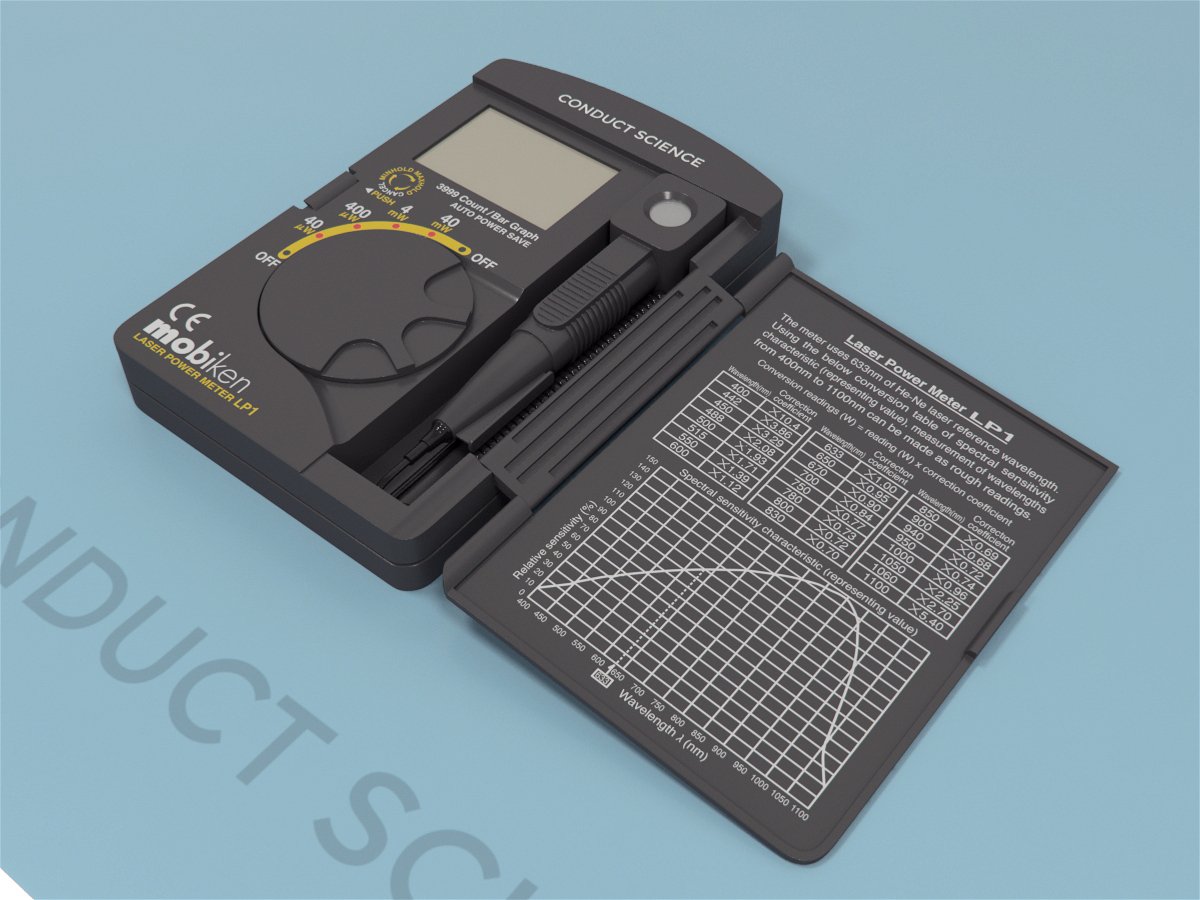Laser power meters are extensively used in laser-equipped laboratories to measure laser powers and observe the continuous wave (CW laser). They are used to analyze lasers within a particular wavelength and intensity range.
The silicon photodiode-based LP1 laser power meter has a spectral range of 400nm to 1100nm. It uses 633nm of He-Ne laser as a reference wavelength. The spectral sensitivity conversion table given with the apparatus is used for the characteristic measurement of wavelengths between 400-1100nm. It can be installed conveniently, has a small volume, and shuts down automatically after half an hour to facilitate power saving.
ConductScience offers rodent laser power meters.
$1,099.00
10% off with your subscription Membership


Laser power meters are extensively used in laser-equipped laboratories to measure laser powers and observe the continuous wave (CW laser). They are used to analyze lasers within a particular wavelength and intensity range. These power meters are available in a wide range of wavelengths and customized as per the experimenter’s needs.
Laser power meters can possess two types of detectors:
Thermal detector-based laser power meters contain thermopile discs or pyroelectric sensors. A thermopile sensor receives the radiation and converts it into thermal energy. A temperature gradient is established across the ‘hot,’ and ‘cold’ junctions present on the thermopile disc. An array of thermocouples measures this temperature difference in the form of voltage and, the measured voltage is directly proportional to the coming laser rays. The power meters based on thermal transducers are expensive with slow responsivity; however, they generate a flat spectral response.
Quantum detector-based laser power meters employ the use of photodiodes (PDs), photomultipliers, and photo-conductors. Generally, photomultipliers require high voltage for operation, whereas photodiodes (PDs) can work well on low voltages. Photodiodes are usually used to measure low laser powers due to their high quantum efficiency and the fact that they generate accurately linear output from the incident light intensity. Silicon photodiodes are the most widespread form of quantum detectors used because of the wide range of advantages they present.
A silicon photodiode-based laser power meter works by converting incident laser light into a proportionate current. Photodiodes (PDs) are responsible for this conversion. An operational amplifier then transforms this proportionate current into a voltage. The current monitoring circuit must offer zero impedance to the photodiode in the current mode of operation. The input of the operational amplifier is inverted with the virtual ground to ensure the maintenance of zero bias across the photodiode. This ‘high input impedance’ from the operational amplifier ensures that all photodiode current flows through the feedback resistor. Photodiode’s responsivity data (presented in the datasheet) helps estimate the current flowing through PD for available laser power. In a nutshell, the laser light incident on the photodiode generates current through it, and the feedback resistor yields an output equal to PD current multiplied by the feedback resistance, i.e., “Vout = IIn.R”.
The silicon photodiode-based LP1 laser power meter has a spectral range of 400nm to 1100nm. It uses 633nm of He-Ne laser as a reference wavelength. The spectral sensitivity conversion table given with the apparatus is used for the characteristic measurement of wavelengths between 400-1100nm. It can be installed conveniently, has a small volume, and shuts down automatically after half an hour to facilitate power saving. Moreover, it has a pyroelectric probe and multiband measurement ability for a broad-spectrum range. It has a measurement accuracy of 0.01ꭒW, and the measurement range varies between 0-40ꭒW, 0-400ꭒW, 0-4mW, and 0-40mW.
Laser power meters effectively monitor the power of laser radiations directed from a source to induce ophthalmic diseases in rodent models.
Researchers use laser power meters along with Optogenetics Laser to induce various diseases in rodent models (rats/mice) and study their mechanisms. The laser power meter help monitor the laser power coming out of the laser source. Guo et al. (2016) examined a rodent model of an ophthalmic disease Nonarteritic Anterior Ischemic Optic Neuropathy (rNAION), i.e., a focal ischemic lesion of the optic nerve. They induced the disorder by illuminating Rose Bengal (RB), a photoactive dye with 532nm wavelength laser light, targeting the anterior optic nerve. The researchers used a laser power meter to monitor the laser power output regularly. This experimental setup enabled them to study and analyze the mechanism of white matter ischemia.
Photodiode-based laser power meters are durable, compact, and lightweight. They have a high quantum efficiency and a high responsivity rate. They have adopted a pyroelectric probe, designed specifically to function at a low voltage, reduce mechanical stress and measure laser lights of low power levels. However, a prospective disadvantage of photodiodes is that they do not respond uniformly across the entire area, which lessens measurement repeatability while working with non-uniform laser beams.
| Brand | RWD |
|---|
You must be logged in to post a review.
DISCLAIMER: ConductScience and affiliate products are NOT designed for human consumption, testing, or clinical utilization. They are designed for pre-clinical utilization only. Customers purchasing apparatus for the purposes of scientific research or veterinary care affirm adherence to applicable regulatory bodies for the country in which their research or care is conducted.

Reviews
There are no reviews yet.